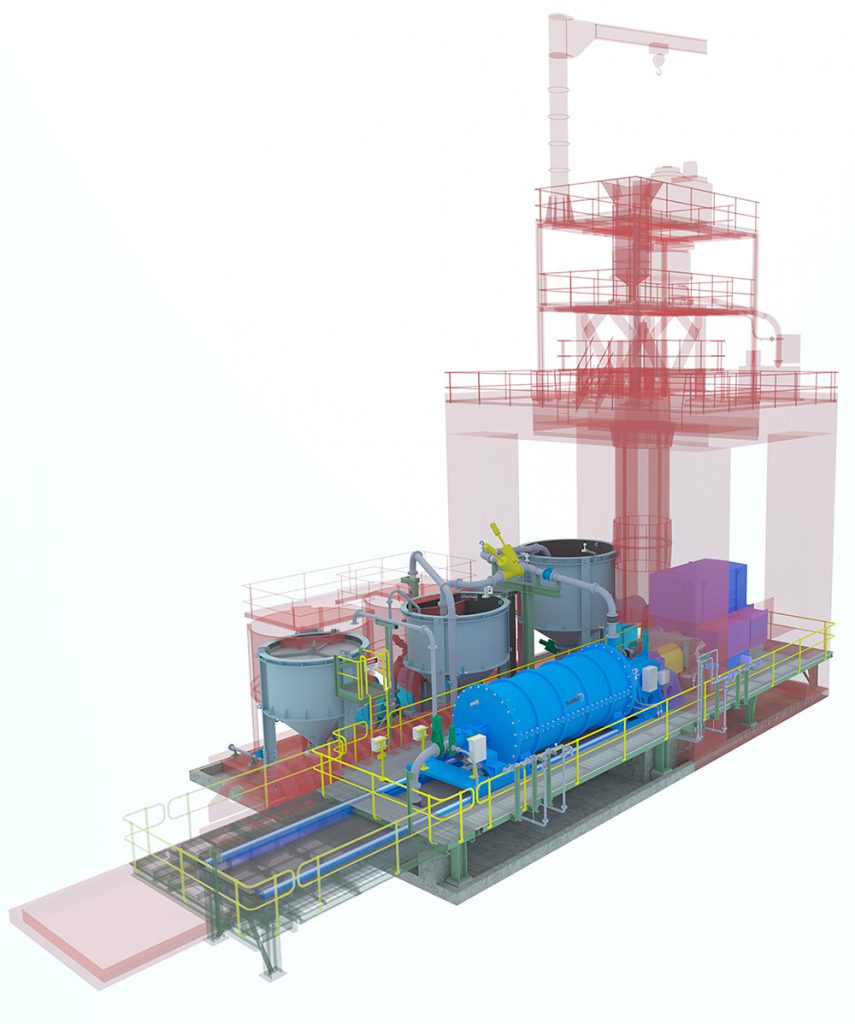IsaMill Leaps Into Small Footprint and Big Performance
IsaMill, a fine grinding technology that has made a name for itself on the market over the last 25 years as the world’s only horizontal fine-grinding mill, always had advantages. But key design changes have now made it even more competitive.
Its original incarnation was engineered 25 years ago in Australia, where a complex orebody required a finer grind than any existing mill could deliver. What became Glencore Technology developed a solution, first installed in Mt Isa and McArthur River Mine, and impressively still running today.
It has since evolved and been rolled out across 130 metalliferous installations covering every continent.
The IsaMill of 2020 scales up from lab tests to real-world performance with 100% accuracy and is the only mill to provide a 25% capital-back guarantee.

The only drawback has been the belief that it was more expensive and longer in footprint than other fine grinding mills. However, the latest innovation sequence and a true comparison shows the IsaMill and a vertical mill both occupy the same footprint.
Glencore Technology has made two significant changes to the IsaMill, slashing civil infrastructure costs by up to 28% and reducing total operational footprint.
It’s been achieved by lowering the IsaMill by two metres for the M5,000 and three metres for the M10,000, reducing platform costs and by further creating a removable platform for opening the mill that can be stowed under the mill.
With the design changes, the IsaMill is now about a third of the height of a high intensity grinding (HIG) mill and the same horizontal footprint, even without stowing the platform.
Glencore Technology Marketing Manager, Stephen Johnson, said, “Stirred Mills require access to the shaft for maintenance. So whether the mill is vertical and the shaft is removed by crane and a dedicated mobile platform, or the mill is horizontal and opened hydraulically using rails, that access must be there or your mill can’t be maintained.”
He said the IsaMill and a vertical fine grinding mill both occupy the same footprint to provide access to the shaft. However, with the IsaMill a third of the height and introducing the removable rail platform, it occupied a smaller total operational area.
Johnson confirmed the changes did not affect performance. “The IsaMill still retains all the availability and safety advantages of being horizontal. The mill is a closed mill, so it’s not losing media or fighting gravity and short circuiting. This means it’s delivering high availability.”
He also said that there was no requirement to work beneath suspended loads or use cranes, giving the horizontal IsaMill unique safety advantages while delivering simple maintenance.
The IsaMill doesn’t require cyclones to classify the product. Instead, it uses a more efficient internal classifier that allows the mill to run in open circuit.
Considering 720 running hours at 24 hours a day can need just 8 hours maintenance in a month, it can easily deliver 98% availability from a mill that’s easy to open.
And recent developments like conical spacers have improved performance by reducing the energy needed to grind by up to 22%.
“The IsaMill has evolved a lot in 25 years,” said Johnson. “The core principles of operation have stayed, and these deliver great product. But what we’ve progressed, designed, built and delivered might be the best fine grinding mill available.”
— The preceding Joint-Venture Article is PROMOTED CONTENT sponsored by Glencore Technology Pty Ltd, and compiled in cooperation with MINING.com. Visit www.isamill.com/en/Pages/home.aspx for more information.

Comments
Festus haoseb
Pictures for milling grind machine